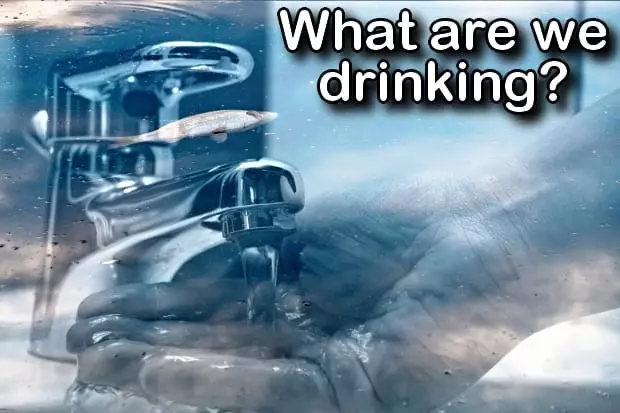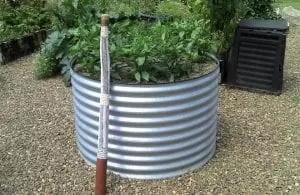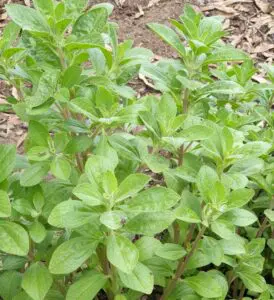Lead, fluoride, disinfecting byproducts, arsenic, prescriptive drugs. The list of contaminants that are lurking in our drinking water is long.
In this article, I want to focus on contaminants that originate from agriculture. I'm going to explain how they enter public water systems and a range of natural freshwater sources used for bottled water, and why you should be concerned about them. Then I will provide you with information on how you can protect yourself.
What contaminants used in agriculture can be found in our water and how do they get there?
Agriculture in the United States is one of the main sources of contamination for ground- and surface water. The latter includes first and foremost rivers and lakes, but also wetlands and of course our oceans, although we usually don't use them as a source for drinking water production.

Plant Fertilisers
According to statistics published by the United States Department of Agriculture, 23.2 million tons of plant fertilisers were used across the country in the year 2014. 57% (13.3 million tons) of these were nitrogen-based.
Nitrate is one of the substances that accumulate in our soil as a consequence and due to its high water solubility runs off into surface water as a result of heavy rains and also leaches into groundwater over time. This led to nitrate being one of the most commonly found contaminants in tap water served to more than 200 million Americans. What's more, the numbers show that water in agricultural areas is usually more severely affected, which makes a lot of sense.
Changes in thyroid function and an increased risk of bladder cancer are two of the negative health effects associated with increased nitrate intake.
Manure
350 million to 1 billion tons of manure are produced by livestock every single year. Manure accounts for up to 48% of total phosphorus entering U.S. waters, it's another source for nitrate and, on top of that, it contains pathogenic germs that also find their way into our glasses from time to time. How? Just like nitrate, the germs first accumulate in soil and enter surface water due to flooding or slowly leach into groundwater.
Phosphorus and to some extent nitrate are responsible for algal blooms in water, which pose another serious threat to our health.
Pesticides
Last but not least, we have pesticides – a group of chemicals that include herbicides, insecticides, and fungicides among other harmful substances. "Over 1 billion pounds of pesticides are used in the United State (US) each year and approximately 5.6 billion pounds are used worldwide." (source)
The bad news is – or shall I say more bad news – that for some pesticides, there doesn't even exist a national drinking water standard. In other words, there's no official benchmark that says "this pesticide concentration in our water exceeds legal limits, so we have to alert the public and do something about it".
Although the food we eat is the biggest factor of pesticide exposure, it also finds its way into our drinking water. Long-term exposure can result in chronic health problems, such as asthma, allergies, and hypersensitivity. What's more, some pesticides are linked to causing cancer, hormone disruption, and reproduction problems.
Why is bottled water affected?
If tap water is contaminated, I'm going to stick to bottled water from now on. Problem solved, right? Unfortunately, no! Here's why:
1. "64 percent of bottled water comes from municipal tap water sources," says Food & Water Watch. Sure, in many cases the water receives additional treatment, but so does tap water and still, dozens of contaminants remain in it.
2. There is spring water. There is artesian water. There is well water. All are drawn from underground water sources. Unless you do some serious testing, there's no way for you to tell that it's pollution-free.
What can you do to protect yourself?
There are ways how you can protect yourself against potentially dangerous water contaminants, which I'm going to talk about now.
Option 1: Water Filters
Water filters are your best option. They come in all forms and sizes and use different technologies to treat the water in your home. Personally, I recommend the use of a reverse osmosis system, because this type of filter is the most effective at removing unwanted substances.
At the heart of every RO system is a semi-porous membrane that lets water molecules pass through, but rejects bacteria, viruses, heavy metals, organic chemicals – you name it. If you are eager to learn more about the technology, you can do so here.
The only real drawback with RO filters is that a decent system will cost you $180 and more, plus they require professional installation – professional in a sense that you have to connect them to the cold water line and drain line under your kitchen sink. With the right tools and some manual skills, this should not pose a problem, though.
An alternative to RO-based systems is carbon filters, which you can either directly attach to a faucet, place on your countertop, or use as a pitcher. Carbon filter systems are more affordable (between $25 and $60), but they lose points because they won't remove viruses and nitrate among many other substances.
Option 2: Premium Bottled Water
Theoretically speaking, it's possible to find a company that sells bottled water that is safe to drink, as it's free from pollutants. As we've learned, the first criterion is that it's not just plain tap water filled into a bottle. The water must be drawn from an uncontaminated natural source, which basically leaves spring water or artesian water from a confined aquifer.
The second criterion is that it comes in glass containers. PET bottles are known to contaminate the water they contain with microplastic particles.
The third and last criterion is cost. Bottled water is so much more expensive than tap water. According to an article published on businessinsider.com, bottled water costs about $7.50 per gallon, which is "almost 2,000x the cost of a gallon of tap water and twice the cost of a gallon of regular gasoline".
Conclusion
Drinking water pollution is a serious health threat. Nitrate, phosphorus, pathogens, and pesticides are contaminants that originate from agriculture. We may not be able to stop them from entering the water cycle, but we can remove them from our water with the help of effective filter systems.
Editor: I hope you enjoyed this guest article written by Gene, founder of BOS, and I strongly encourage you to visit and follow her Website over at BOS here.













